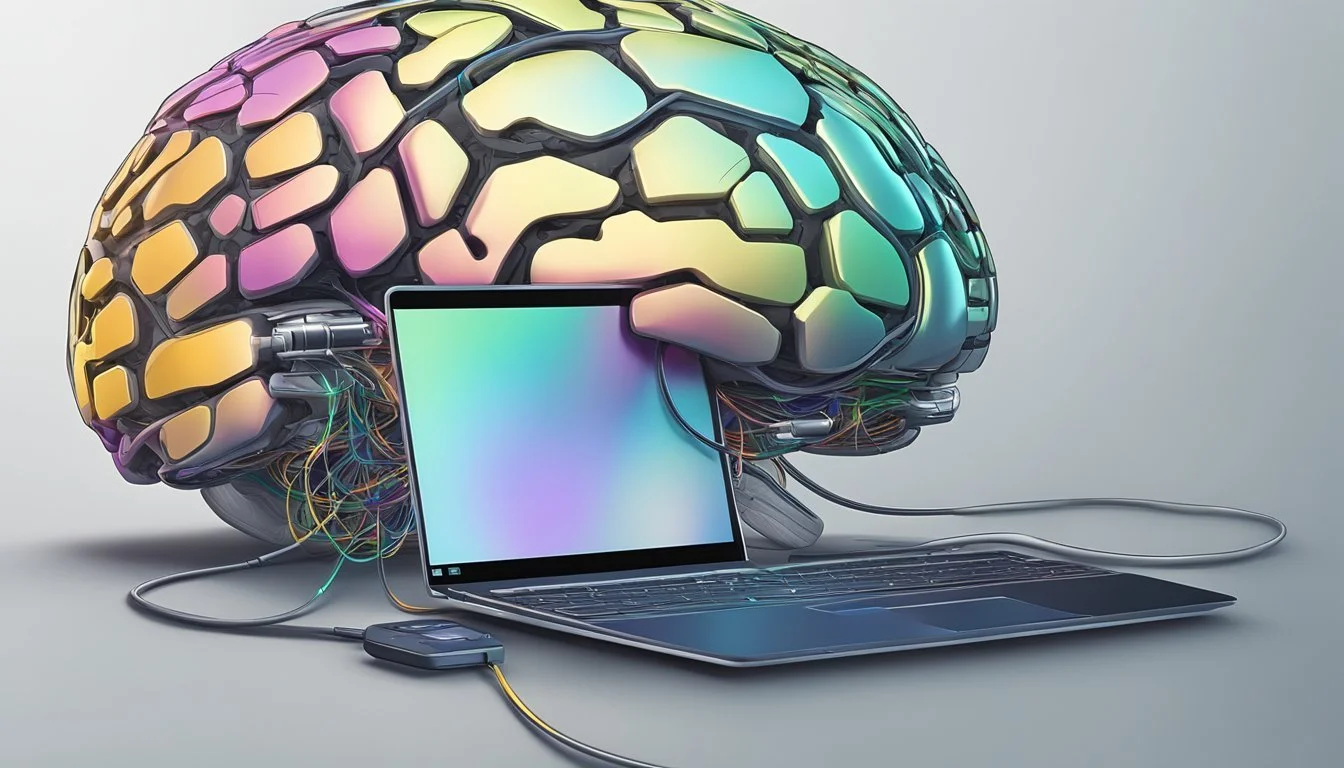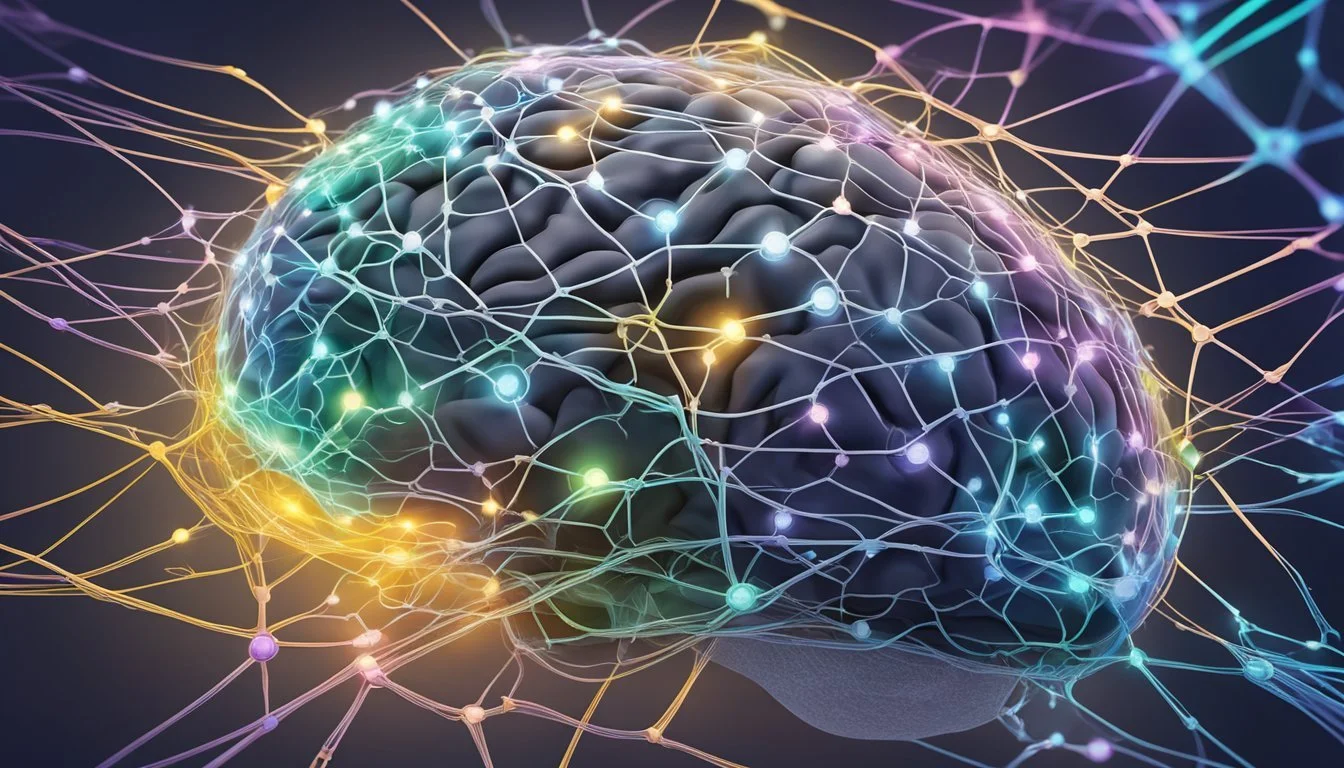Neuralink's Neural Lace
Elon Musk's Brain-Computer Interface Pushes Technological Boundaries
Neuralink, Elon Musk's brain-computer interface company, has made significant strides in merging human cognition with artificial intelligence. In early 2024, the company successfully implanted its first chip in a human brain, marking a pivotal moment in neurotechnology. This breakthrough has sparked intense interest and debate in scientific and ethical circles.
The Neural Lace technology developed by Neuralink aims to enhance human capabilities by allowing direct communication between the brain and external devices. Its potential applications range from treating neurological disorders to augmenting cognitive functions. The device, roughly the size of a coin, contains thin threads that connect to specific areas of the brain.
Neuralink's first human recipient, Noland Arbaugh, has reported positive experiences with the implant. He describes being able to control computers with his mind, gaining a new sense of independence. This early success suggests that Neuralink's technology could revolutionize how humans interact with digital systems and potentially improve quality of life for those with neurological conditions.
Understanding Neuralink and Neural Lace Technology
Neuralink's Neural Lace technology represents a groundbreaking approach to brain-computer interfaces. This system aims to create a direct link between the human brain and external devices, potentially revolutionizing how we interact with technology and treat neurological conditions.
History and Development of Neuralink
Elon Musk founded Neuralink in 2016 with the goal of developing ultra-high bandwidth brain-machine interfaces. The company's initial focus was on creating a neural implant that could seamlessly integrate with the brain.
In 2019, Neuralink unveiled its first prototype, showcasing the potential of their technology. The company has since made significant strides in miniaturizing their implants and improving surgical techniques.
Neuralink achieved a major milestone in early 2024 when they successfully implanted their device in a human subject for the first time. This marked a crucial step towards realizing the company's vision of enhancing human cognitive capabilities.
Components of the Neural Lace System
The Neural Lace system consists of several key components:
Implant: A small chip embedded in the brain
Electrodes: Ultra-thin wires that connect to neurons
Surgical robot: Precision equipment for implantation
External device: For processing and transmitting signals
The N1 implant, Neuralink's current iteration, is about the size of a coin. It contains numerous electrodes capable of detecting and stimulating neural activity.
The surgical robot is designed to insert the electrodes with microscopic precision, minimizing tissue damage during implantation.
Principles of Brain-Computer Interfaces
Brain-computer interfaces (BCIs) work by interpreting the brain's electrical activity and translating it into commands for external devices. This process involves:
Signal acquisition: Detecting neural activity
Signal processing: Filtering and analyzing brain signals
Output generation: Converting processed signals into actions
BCIs can be invasive, partially invasive, or non-invasive. Neuralink's approach falls into the invasive category, offering potentially higher precision and bandwidth.
The technology relies on neuron spike detection to capture brain signals accurately. This allows for more nuanced interpretation of neural activity compared to traditional EEG-based systems.
Differentiating Between BCIs and Neuralink's Approach
While Neuralink builds upon existing BCI principles, it introduces several unique features:
High-density electrodes: Neuralink's system uses a much larger number of electrodes than traditional BCIs, allowing for more detailed neural recordings.
Wireless operation: The N1 implant is designed to operate wirelessly, reducing infection risks associated with transcranial wires.
Two-way communication: Neuralink aims to both read and write information to the brain, potentially enabling more advanced applications.
Scalability: The company's long-term goal is to create a "digital layer" that seamlessly integrates with human cognition, going beyond simple input/output functions.
These innovations position Neuralink at the forefront of neurotech development, pushing the boundaries of what's possible in brain-computer interfaces.
Elon Musk's Vision and Goals for Neuralink
Elon Musk envisions Neuralink as a transformative technology to enhance human cognition and merge biological intelligence with artificial intelligence. The company aims to develop brain-computer interfaces that could revolutionize how humans interact with technology and each other.
Expanding Human Capability with Neuralink
Neuralink's primary goal is to augment human abilities through direct brain-computer connections. The technology aims to improve memory, boost attention spans, and enable multitasking at unprecedented levels.
Early trials have shown promising results. Noland Arbaugh, the first Neuralink user, reported being able to control a computer with his mind, gaining a new sense of independence.
Musk believes these implants could help treat neurological conditions and injuries. The company's PRIME clinical trial (Precise Robotically Implanted Brain-Computer Interface) focuses on developing solutions for people with paralysis or limited mobility.
Long-term Ambitions: Telepathy and Beyond
Musk's long-term vision for Neuralink extends far beyond medical applications. He sees the technology as a path to "human/AI symbiosis," which he describes as "species-level important."
The company's first product, named Telepathy, hints at Musk's ambitious goals. He envisions a future where humans can communicate telepathically, share thoughts and memories directly, and seamlessly interface with artificial intelligence systems.
Neuralink is also exploring artificial vision capabilities. Musk claims their device, called Blindsight, is already showing success in animal trials. This technology could potentially restore or enhance visual perception for those with impaired sight.
Medical Applications and Benefits
Neuralink's brain-computer interface technology shows promise for treating various neurological conditions and restoring lost functions. The neural implant aims to address paralysis, neurodegenerative diseases, and sensory impairments through direct brain-computer communication.
Treating Paralysis and Restoring Motor Functions
The Neuralink implant targets the motor cortex to restore movement in paralyzed individuals. By detecting neuron spike patterns associated with intended movements, the device can translate brain signals into commands for assistive devices or stimulate muscles directly. This could allow patients with spinal cord injuries to regain control of their limbs or operate prosthetics with their thoughts.
Early clinical trials focus on participants with quadriplegia. The goal is to enable them to control computer cursors or smartphones using only their minds. As the technology advances, researchers hope to restore more complex motor functions and increase independence for those with paralysis.
Assisting Patients with Neurodegenerative Diseases
Neuralink's technology may offer new treatment options for neurodegenerative conditions like Amyotrophic Lateral Sclerosis (ALS). The brain implant could potentially bypass damaged neural pathways to restore communication and motor control.
For ALS patients losing their ability to speak, the device might allow direct thought-to-text conversion. This would preserve their ability to communicate even as the disease progresses. The implant may also help maintain control over assistive devices as motor functions decline.
Potential for Overcoming Blindness and Quadriplegia
Research into using Neuralink's technology for sensory restoration is ongoing. For individuals with certain types of blindness, the implant might stimulate the visual cortex to produce artificial vision signals.
In cases of quadriplegia, the device could potentially restore both motor control and sensory feedback. This would allow patients to not only move paralyzed limbs but also regain the sense of touch. Such advancements could significantly improve quality of life and independence for those with severe disabilities.
Challenges and Ethical Considerations
Neuralink's brain-computer interface technology raises significant ethical questions and faces substantial technical hurdles. The intersection of artificial intelligence and human cognition presents complex moral dilemmas alongside engineering challenges.
The Ethics of Brain Implants and Artificial Intelligence
Brain implants blur the line between human and machine, raising concerns about identity and autonomy. Critics worry that neural interfaces could allow external control or manipulation of thoughts and behaviors. There are also questions about data privacy and security of neural information.
The potential for cognitive enhancement through AI integration raises issues of fairness and societal inequality. If only wealthy individuals can access these technologies, it could widen existing disparities. There are also concerns about the long-term effects on human cognition and social interactions.
Informed consent for invasive brain surgery with uncertain outcomes presents another ethical challenge. The risk-benefit analysis is complex when dealing with experimental neurotechnology.
Technical Challenges and Safety Concerns
Developing safe, long-lasting brain implants is a significant engineering challenge. The devices must be biocompatible to avoid immune rejection or damage to delicate neural tissue. Maintaining stable long-term connections between electrodes and neurons is difficult due to natural brain movement and scarring.
Precise surgical insertion of the implants requires advanced robotic systems to minimize brain trauma. Neuralink has developed a specialized surgical robot for this purpose.
Wireless power and data transmission through the skull present additional technical hurdles. The implants must operate safely without overheating or causing electromagnetic interference with brain activity.
Cybersecurity is a critical concern, as hacked neural implants could have severe consequences. Robust encryption and access controls are essential to protect users' brain data and implant functionality.
Human Translations:
Chinese: ## 挑战和伦理考量
Neuralink的脑机接口技术引发了重大的伦理问题,并面临着巨大的技术障碍。人工智能与人类认知的交叉点呈现出复杂的道德困境和工程挑战。
脑植入物和人工智能的伦理问题
脑植入物模糊了人与机器之间的界限,引发了有关身份和自主权的担忧。批评者担心神经接口可能允许外部控制或操纵思想和行为。神经信息的数据隐私和安全性也存在问题。
通过AI集成实现认知增强的潜力引发了公平性和社会不平等的问题。如果只有富人才能获得这些技术,可能会扩大现有的差距。人们还担心这对人类认知和社交互动的长期影响。
对于结果不确定的侵入性脑部手术,知情同意是另一个伦理挑战。在处理实验性神经技术时,风险收益分析是复杂的。
技术挑战和安全隐患
开发安全、持久的脑植入物是一项重大的工程挑战。这些设备必须具有生物相容性,以避免免疫排斥或对脆弱的神经组织造成损害。由于大脑自然运动和瘢痕形成,维持电极与神经元之间的长期稳定连接很困难。
精确植入植入物需要先进的机器人系统来最大限度地减少脑损伤。Neuralink为此开发了专门的手术机器人。
通过颅骨进行无线供电和数据传输带来了额外的技术障碍。植入物必须安全运行,不会过热或对脑活动造成电磁干扰。
网络安全是一个关键问题,因为被黑客入侵的神经植入物可能会造成严重后果。强大的加密和访问控制对保护用户的脑数据和植入物功能至关重要。
Spanish: ## Desafíos y consideraciones éticas
La tecnología de interfaz cerebro-computadora de Neuralink plantea importantes cuestiones éticas y enfrenta obstáculos técnicos sustanciales. La intersección entre la inteligencia artificial y la cognición humana presenta complejos dilemas morales junto con desafíos de ingeniería.
La ética de los implantes cerebrales y la inteligencia artificial
Los implantes cerebrales difuminan la línea entre lo humano y la máquina, suscitando preocupaciones sobre la identidad y la autonomía. Los críticos temen que las interfaces neurales puedan permitir el control o la manipulación externa de pensamientos y comportamientos. También existen cuestiones sobre la privacidad de los datos y la seguridad de la información neural.
El potencial de mejora cognitiva a través de la integración de IA plantea problemas de equidad y desigualdad social. Si solo los individuos adinerados pueden acceder a estas tecnologías, podría ampliar las disparidades existentes. También hay preocupaciones sobre los efectos a largo plazo en la cognición humana y las interacciones sociales.
El consentimiento informado para una cirugía cerebral invasiva con resultados inciertos presenta otro desafío ético. El análisis de riesgo-beneficio es complejo cuando se trata de neurotecnología experimental.
Desafíos técnicos y preocupaciones de seguridad
Desarrollar implantes cerebrales seguros y duraderos es un desafío de ingeniería significativo. Los dispositivos deben ser biocompatibles para evitar el rechazo inmunológico o el daño al delicado tejido neural. Mantener conexiones estables a largo plazo entre los electrodos y las neuronas es difícil debido al movimiento natural del cerebro y la formación de cicatrices.
La inserción quirúrgica precisa de los implantes requiere sistemas robóticos avanzados para minimizar el trauma cerebral.
Roadmap to Commercialization
Neuralink's journey from human trials to a widely available product involves rigorous testing and regulatory approvals. The company aims to refine its technology while expanding user accessibility and control features.
From Clinical Trials to Commercial Product
Neuralink began its human trials in January 2024, marking a significant milestone. The Prime Trial focuses on safety and basic functionality of the brain-computer interface. Early results show promise, with the first user demonstrating cursor control through thought.
Subsequent trials will likely test more advanced features and gather long-term safety data. Regulatory bodies, such as the FDA, will closely scrutinize these results before granting approval for commercial use.
Neuralink must also scale up production capabilities to meet potential demand. This includes refining manufacturing processes and establishing quality control measures for consistent, safe devices.
User Accessibility and Control
As Neuralink progresses towards commercialization, user experience becomes crucial. The company is developing a user app to interface with the implant, allowing for personalized settings and controls.
Early demos showcase cursor control via Bluetooth, enabling users to operate devices wirelessly. Future iterations may expand capabilities to include text input, smart home control, and more complex digital interactions.
Neuralink faces the challenge of making its technology accessible to a wider range of users. This includes designing user-friendly interfaces for those with varying levels of tech literacy and physical abilities.
Training programs for users and healthcare providers will be essential to ensure proper device usage and maintenance. Neuralink must also address data privacy concerns, implementing robust security measures to protect user information.
Neuralink's Technological Innovations
Neuralink's technological advancements focus on precision implantation and enhanced neural signal detection. These innovations aim to create a seamless brain-computer interface.
The Role of the Surgical Robot in Implantation
Neuralink's custom-designed surgical robot plays a crucial role in the implantation process. This high-precision machine can insert multiple ultra-thin electrode threads into specific brain regions with minimal tissue damage.
The robot uses advanced imaging techniques to map the brain's surface and avoid blood vessels during insertion. Its micron-level accuracy ensures optimal placement of the threads for maximum signal quality.
The automated nature of the robot reduces human error and surgery time, potentially making the procedure more accessible and safer for patients.
Breakthroughs in Neuron Spike Detection Technology
Neuralink's neuron spike detection technology represents a significant leap in brain-computer interfaces. The company's N1 chip contains over 1,000 electrodes, capable of detecting and processing neural signals with unprecedented accuracy.
These electrodes can capture individual neuron spikes, allowing for more precise interpretation of brain activity. Advanced algorithms filter out noise and artifacts, improving signal quality.
The system's ability to wirelessly transmit data enables real-time processing of brain signals. This technology paves the way for more natural and responsive control of external devices through thought alone.
Impact on Society and Future Outlook
Neuralink's brain-computer interface technology holds transformative potential for medical treatments and human capabilities. Its applications could reshape society and human evolution in profound ways.
The Potential to Transform Medical Treatments
Neuralink's neural lace offers hope for treating neurological conditions. Clinical trials have shown promise for patients with amyotrophic lateral sclerosis (ALS) and stroke. The technology enables direct brain-to-device communication, potentially restoring movement and speech.
Early results indicate improved mobility for paralyzed individuals. Patients have demonstrated the ability to control computer cursors and robotic limbs through thought alone. This breakthrough could dramatically enhance quality of life for those with severe motor impairments.
Future applications may extend to treating memory loss, depression, and other cognitive disorders. Neuralink's precise neural interface could allow targeted therapies at the cellular level.
The Influence on Human Evolution and Society
As Neuralink's technology advances, it may augment human cognitive abilities. Enhanced memory, faster information processing, and direct brain-to-brain communication are potential future capabilities.
These advancements raise ethical questions about fairness and access. Will neural enhancements create a divide between augmented and non-augmented individuals? Societal norms and regulations will need to adapt to this new paradigm.
The technology could also impact education and workforce dynamics. Instant access to information and enhanced learning capabilities may reshape how we acquire and apply knowledge. This could lead to significant shifts in job markets and skill requirements.
Privacy and security concerns loom large as brain-computer interfaces become more prevalent. Protecting neural data and preventing unauthorized access will be critical challenges for the neurotech industry.



